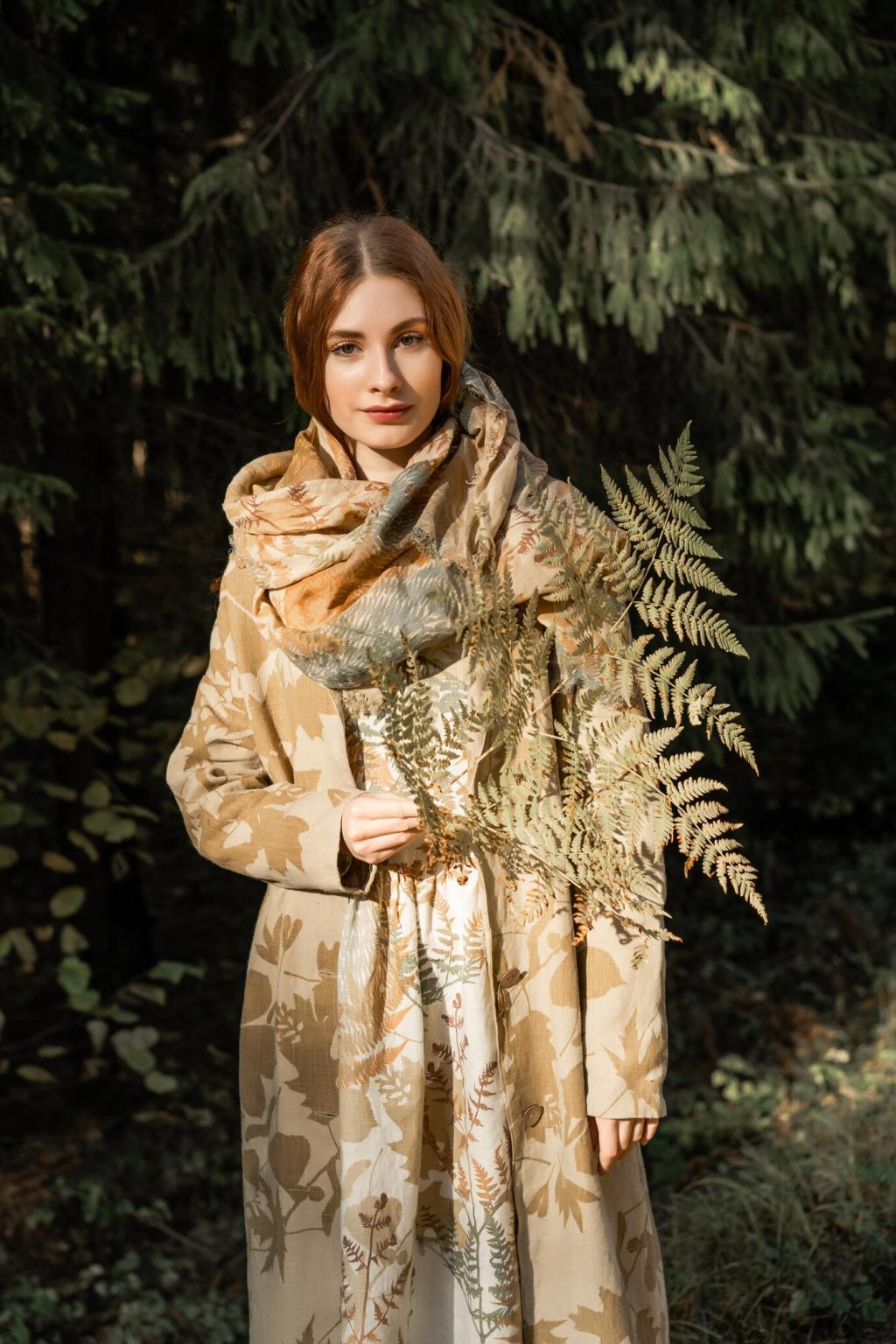Sustainable Fashion Innovations
Sustainable fashion innovations are reshaping the way clothing is designed, produced, consumed, and disposed of. This movement responds to environmental, social, and economic challenges by integrating creative approaches and advanced technologies. Brands, designers, and researchers are reinventing traditional practices to reduce waste, resource consumption, and the negative impact of fashion on the planet while delivering appealing products to consumers. As demand for ethical and eco-friendly apparel grows, sustainable fashion innovations are leading the transition to a more responsible and conscious industry, providing hope for a greener future.

Plant-Based Alternatives
The development of plant-based fabrics has gained significant momentum in recent years. Materials such as organic cotton, bamboo, hemp, and even fibers derived from pineapple leaves, banana stems, or eucalyptus trees are offering strong, versatile, yet eco-friendly options for designers. Plant-based alternatives require fewer chemicals, less water, and often have lower carbon footprints compared to conventional cotton or petroleum-based synthetics. By reimagining plant resources for fiber production, these innovations contribute to reducing the environmental burden of clothing manufacturing, making natural, renewable materials increasingly accessible to mainstream fashion.
Recycled Fibers
Technological advances now enable the transformation of waste into valuable textiles, most notably through the recycling of discarded clothing and post-consumer plastics. Brands are partnering with textile innovators to develop yarns and fabrics made from recycled polyester, nylon, and even ocean plastics. These recycled fibers help divert waste from landfills and oceans, conserve resources, and limit demand for virgin materials. The growth of closed-loop recycling technologies is an essential step towards a circular fashion system, ensuring that garments can be continually repurposed without compromising quality or style.
Mushroom and Bioengineered Fabrics
In the pursuit of truly innovative textiles, bioengineered materials such as mycelium leather and lab-grown fibers are gaining traction. Mycelium, derived from the root structure of mushrooms, can be cultivated under controlled conditions to produce leather-like materials that are cruelty-free and biodegradable. Similarly, biotech companies are creating lab-grown silk and spider-silk proteins without relying on traditional farming or animal agriculture. These breakthroughs represent a new frontier in sustainable fashion, offering high performance and luxurious alternatives minus the environmental drawbacks.
Green Manufacturing Processes
Waterless Dyeing and Finishing
Traditional dyeing and finishing methods consume large volumes of water and often release pollutants into ecosystems. Innovative waterless dyeing techniques, such as supercritical CO2 dyeing or digital printing, are drastically reducing water usage and toxic chemical runoff. These new processes achieve vibrant, long-lasting colors with much less environmental impact, supporting mass production while aligning with sustainability goals. Implementation of waterless finishing technologies also helps brands appeal to environmentally conscious consumers and comply with stricter regulations.
Renewable Energy Adoption
Transitioning to renewable energy is a powerful lever for reducing the carbon footprint of textile manufacturing. Solar, wind, and geothermal power are replacing fossil fuels in factories, minimizing greenhouse gas emissions and providing cleaner, more reliable sources of energy. Investments in renewable energy not only cut operational costs over time but also bolster brand reputations by demonstrating a tangible commitment to environmental responsibility. Sustainable fashion innovators are leading by example, encouraging the entire industry to rethink its energy sources.
Waste Minimization Initiatives
Manufacturing waste—from scrap fabric to packaging—presents a significant challenge for fashion producers. To counter this, innovative brands are deploying cutting-edge pattern-cutting technologies, on-demand production, and take-back systems that collect and recycle post-consumer waste. These efforts optimize material usage, trim excess, and support a closed-loop production model. By actively prioritizing waste minimization, forward-thinking companies are carving out competitive advantages while helping to conserve resources and protect natural habitats.

Clothing Take-Back Programs
Fashion brands are launching innovative take-back and recycling programs, inviting customers to return used garments for responsible disposal or repurposing. Through partnerships with recycling technology firms and logistical networks, these programs give old clothes new life as fibers for fresh textiles or as new secondhand offerings. This approach extends product lifecycle, reduces landfill waste, and helps instill sustainable habits among consumers, effectively closing the loop in the fashion value chain.

Upcycled and Reworked Collections
Designers are turning waste into treasure by reimagining discarded textiles, deadstock, and preloved garments into unique, one-of-a-kind fashion pieces. Upcycling processes involve creative reconstruction and embellishment, producing distinct collections that minimize waste and highlight craftsmanship. These endeavors foster a culture of appreciation for resourcefulness and creativity while helping to mitigate the environmental impact associated with sourcing new materials.

Rental and Resale Platforms
The normalization of clothing rental and resale is transforming consumer attitudes towards ownership and consumption. Digital platforms facilitate renting designer attire or reselling pre-owned items, thereby extending product lifecycles and reducing demand for new production. This model not only empowers consumers to access diverse styles at lower cost but also supports the redistribution of value within the market. As the sharing economy permeates fashion, waste is reduced, and sustainability is embedded in everyday choices.
Digital and Technological Advancements
3D Virtual Sampling and Prototyping
3D design software and virtual prototyping are revolutionizing the way fashion collections are conceptualized and developed. By enabling designers to create accurate digital samples, brands can modify patterns, test fits, and make changes without producing multiple physical prototypes. This dramatically minimizes material waste, shortens lead times, and slashes development costs. Furthermore, 3D visualization facilitates better decision-making and more precise forecasting, supporting sustainability goals without sacrificing creativity.
Blockchain for Supply Chain Transparency
Blockchain technology is emerging as a powerful tool for increasing transparency and accountability in the fashion supply chain. Immutable digital records help track materials from source to shelf, ensuring ethical sourcing and enabling verification of sustainability claims. Consumers gain confidence in the environmental and social responsibility of their purchases, and brands are equipped to identify and correct inefficiencies in their networks. Blockchain paves the way for traceable, fraud-resistant, and trustworthy fashion systems.
Artificial Intelligence for Demand Forecasting
Artificial intelligence and machine learning are being deployed to optimize inventory management and reduce overproduction. By analyzing consumer data, purchasing patterns, and market trends, AI models enable brands to predict demand with greater accuracy. This reduces surplus stock—which often ends up in landfills—and allows for more responsive, customer-driven production. Harnessing AI not only increases profitability but also supports material efficiency and environmental protection.
Previous slide
Next slide
Sustainable Fashion Design Practices

Emphasizing quality over quantity, brands are moving towards timeless aesthetics and robust construction to ensure garments outlast fleeting trends. Durable design principles focus on selecting resilient materials, reinforcing weak points, and avoiding disposable fashion cycles. By encouraging consumers to invest in fewer, better items, this approach curtails waste, conserves resources, and cultivates a more sustainable relationship with clothing.

